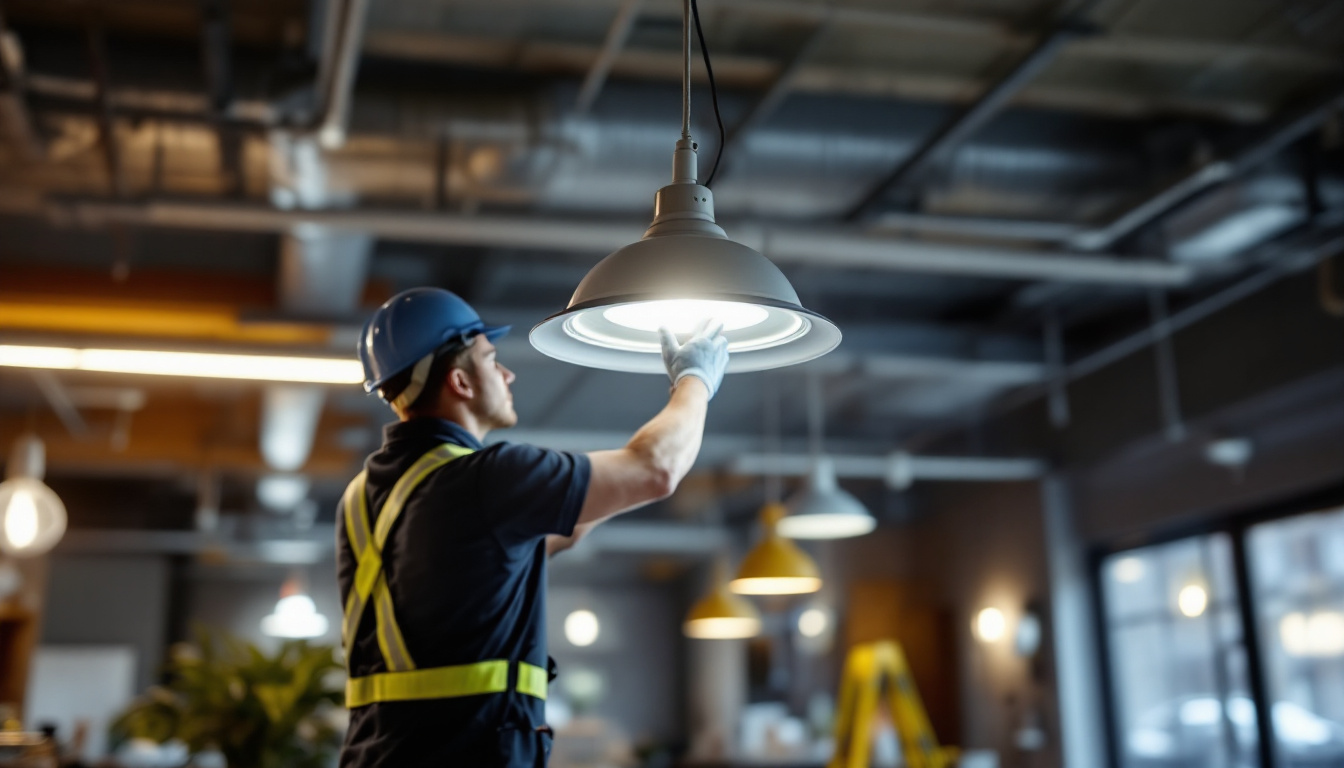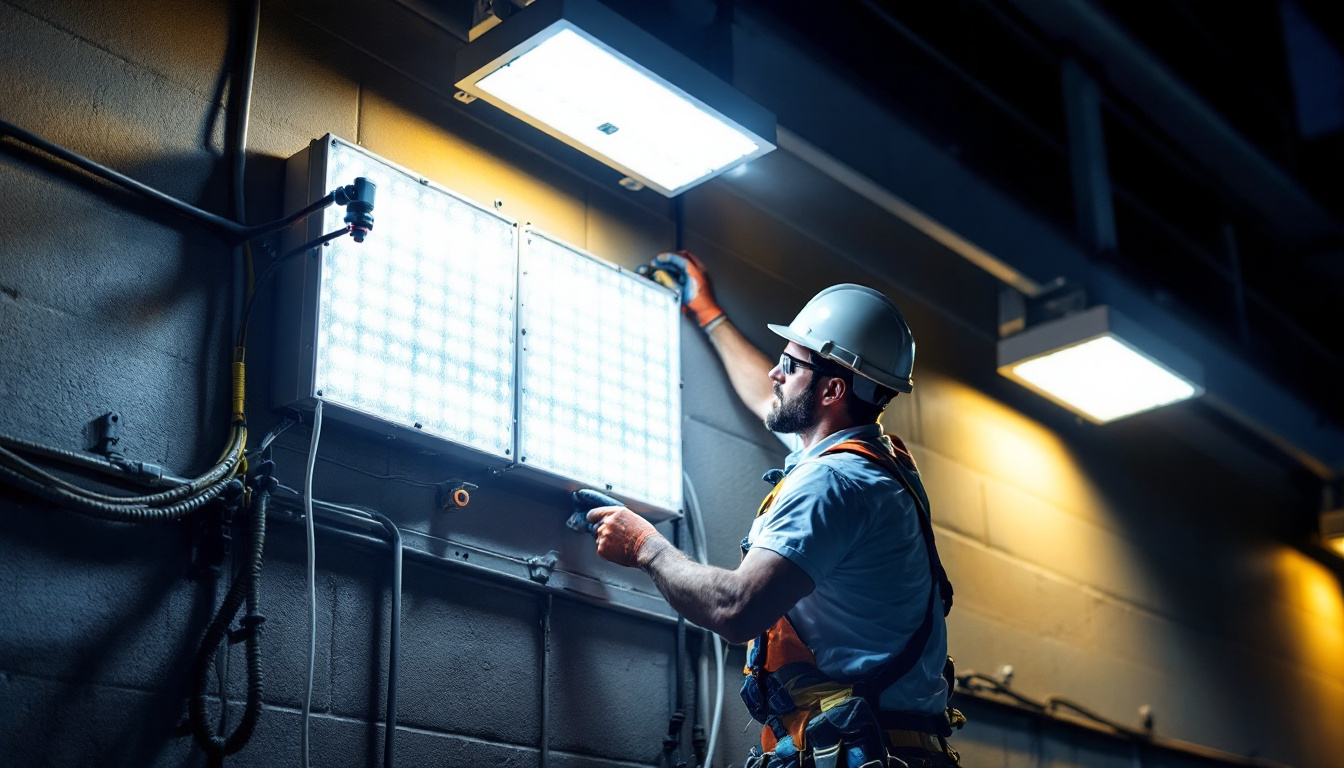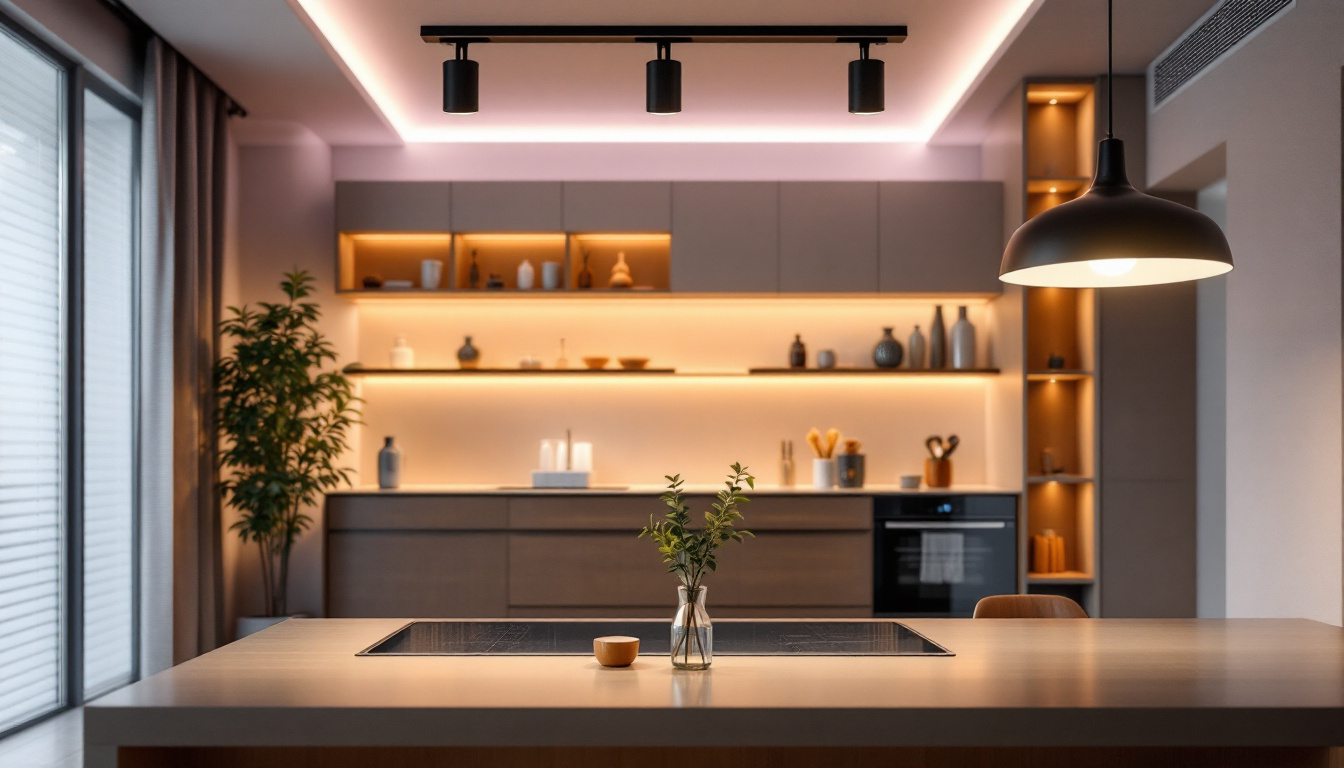

When it comes to industrial and commercial lighting, vapor tight fixtures are essential for ensuring safety and efficiency in challenging environments. These fixtures are designed to withstand moisture, dust, and other contaminants, making them ideal for various applications, including warehouses, food processing plants, and outdoor settings. This comprehensive handbook will delve into the key aspects of vapor tight fixtures, providing lighting contractors with the knowledge needed to select, install, and maintain these crucial components.
Vapor tight fixtures are specially designed lighting solutions that protect against the infiltration of moisture and dust. These fixtures are typically constructed with durable materials and feature sealed lenses and gaskets to prevent contaminants from entering. Understanding their construction and functionality is vital for lighting contractors who aim to provide the best solutions for their clients.
The primary features of vapor tight fixtures include robust housing, sealed optics, and energy-efficient lighting technologies. The housing is often made from materials such as polycarbonate or aluminum, which resist corrosion and impact. Sealed optics ensure that the light source remains protected from environmental factors, while energy-efficient technologies like LED lighting contribute to lower energy costs and longer lifespans. Additionally, many vapor tight fixtures are designed to withstand extreme temperatures, making them suitable for both cold storage facilities and high-heat environments. This adaptability further enhances their appeal, as they can be utilized in a wider range of applications without compromising performance.
Vapor tight fixtures are versatile and can be used in a variety of settings. Common applications include:
These fixtures are not only practical but also enhance visibility and safety in challenging environments. In addition to these common applications, vapor tight fixtures are increasingly being used in agricultural settings, such as greenhouses, where humidity levels can be high and lighting must be both effective and reliable. Their ability to maintain performance in wet and dusty conditions makes them ideal for ensuring that crops receive adequate light without the risk of fixture failure. Furthermore, as sustainability becomes a priority for many businesses, the energy-efficient nature of vapor tight fixtures aligns perfectly with green initiatives, helping organizations reduce their carbon footprint while maintaining optimal lighting conditions.
Selecting the appropriate vapor tight fixture involves considering several factors that align with the specific needs of the project. Lighting contractors must evaluate the environment, the type of light source, and the fixture’s design to ensure optimal performance.
Understanding the environment where the fixtures will be installed is crucial. Factors such as humidity, temperature fluctuations, and the presence of chemicals can significantly impact the choice of fixture. For instance, in areas with high humidity, a fixture with a higher IP (Ingress Protection) rating is recommended to ensure it can withstand moisture. Additionally, in industrial settings where dust and particles are prevalent, selecting a fixture that is not only vapor tight but also dust-tight can prolong the lifespan of the lighting system and reduce maintenance costs. This consideration is particularly important in manufacturing plants or warehouses, where the accumulation of debris can lead to fixture failure and safety hazards.
Vapor tight fixtures can accommodate various light sources, including LED, fluorescent, and HID. LED technology is increasingly popular due to its energy efficiency, long lifespan, and low heat emission. When selecting a light source, consider the lumen output, color temperature, and energy consumption to meet the specific lighting requirements of the space. Furthermore, the choice of light source can also affect the ambiance of the area; for example, warmer color temperatures can create a welcoming atmosphere in hospitality settings, while cooler temperatures are often preferred in work environments for enhanced visibility and focus. It’s also worth noting that the dimming capabilities of certain LED fixtures can provide added versatility, allowing for adjustments based on the time of day or specific tasks being performed.
While functionality is paramount, the design of the vapor tight fixture should not be overlooked. Aesthetically pleasing fixtures can enhance the overall appearance of a facility while still providing the necessary protection. Contractors should consider the fixture’s size, shape, and finish to ensure it aligns with the client’s vision and the environment. Moreover, the integration of modern design elements, such as sleek lines and minimalist profiles, can contribute to a contemporary look that complements the architectural style of the building. In addition, customizable options for color and finish can allow for greater flexibility, enabling fixtures to blend seamlessly with existing decor or stand out as a statement piece. This attention to detail not only elevates the visual appeal but can also reflect the brand identity of the business, making the lighting an integral part of the overall design narrative.
Proper installation of vapor tight fixtures is essential to maximize their performance and longevity. Lighting contractors should adhere to best practices to ensure a successful installation.
Before installation, thorough planning is necessary. This includes assessing the installation site, determining the number of fixtures required, and ensuring that all necessary tools and materials are on hand. Contractors should also review the manufacturer’s guidelines and specifications to ensure compliance with safety standards.
Vapor tight fixtures can be mounted in various ways, including surface mounting, pendant mounting, and chain mounting. The chosen method should be appropriate for the specific application and environment. For example, pendant mounting may be suitable for areas with high ceilings, while surface mounting is ideal for walls or ceilings with limited space.
Making secure electrical connections is critical for the safety and functionality of vapor tight fixtures. Contractors should ensure that all wiring is properly insulated and that connections are made according to local electrical codes. Additionally, using weatherproof junction boxes and fittings can enhance the fixture’s durability in harsh environments.
Regular maintenance is essential to ensure the longevity and efficiency of vapor tight fixtures. Lighting contractors should educate clients on proper care and troubleshooting techniques to address common issues.
Conducting routine inspections can help identify potential problems before they escalate. Contractors should recommend checking the fixtures for signs of wear, such as cracks in the housing or yellowing of the lens. Additionally, ensuring that the fixtures are free from dust and debris can help maintain optimal light output.
Common issues with vapor tight fixtures may include flickering lights, reduced brightness, or complete failure. Contractors should be prepared to troubleshoot these problems. For flickering lights, checking the electrical connections and replacing faulty bulbs can often resolve the issue. If the fixture is not illuminating at all, it may require a replacement of the light source or an inspection of the wiring.
Cleaning vapor tight fixtures is essential for maintaining their performance. Contractors should advise clients to use non-abrasive cleaners and soft cloths to avoid scratching the lens. Regular cleaning will help ensure maximum light output and prolong the life of the fixture.
Lighting contractors must be aware of the regulatory compliance and safety standards that govern the installation and use of vapor tight fixtures. Adhering to these regulations is crucial for ensuring the safety of both the workers and the facility.
Ingress Protection (IP) ratings are crucial in determining the suitability of a vapor tight fixture for a specific environment. The first digit indicates protection against solids, while the second digit indicates protection against liquids. For instance, an IP65 rating signifies that the fixture is dust-tight and can withstand low-pressure water jets. Contractors should ensure that the selected fixtures meet the required IP ratings for their intended applications.
Compliance with local electrical codes is mandatory for all lighting installations. Contractors should familiarize themselves with the National Electrical Code (NEC) and any local amendments that may apply. This includes ensuring that all electrical connections are secure and that fixtures are installed in accordance with safety guidelines.
Safety should always be a top priority when working with electrical fixtures. Contractors should wear appropriate personal protective equipment (PPE) during installation and maintenance. Additionally, implementing lockout/tagout procedures can help prevent accidental energization of the fixtures during maintenance work.
The lighting industry is constantly evolving, and vapor tight fixtures are no exception. Keeping abreast of future trends can help lighting contractors stay competitive and provide the best solutions for their clients.
Smart lighting technology is becoming increasingly popular, even in industrial applications. Vapor tight fixtures equipped with smart sensors can adjust lighting levels based on occupancy or ambient light conditions, enhancing energy efficiency and reducing operational costs. Contractors should consider integrating smart technology into their installations to meet the growing demand for intelligent lighting solutions.
As energy efficiency becomes a priority across all sectors, manufacturers are continually developing more efficient lighting solutions. Vapor tight fixtures are now available with advanced LED technology that offers higher lumen output with lower energy consumption. Staying informed about these advancements can help contractors recommend the most efficient options to their clients.
With a growing emphasis on sustainability, many manufacturers are focusing on eco-friendly materials and production processes. Contractors should consider selecting vapor tight fixtures that are made from recyclable materials and have a lower environmental impact. This not only aligns with sustainability goals but also appeals to clients who prioritize eco-friendly solutions.
Vapor tight fixtures play a crucial role in ensuring safety and efficiency in various industrial and commercial environments. By understanding their features, applications, and installation best practices, lighting contractors can provide superior solutions that meet the needs of their clients. Additionally, staying informed about regulatory compliance, maintenance, and future trends will further enhance their expertise in this essential area of lighting.
As the demand for durable, efficient, and intelligent lighting solutions continues to grow, contractors who invest time in mastering the intricacies of vapor tight fixtures will undoubtedly stand out in the competitive landscape of the lighting industry.
Ready to elevate your lighting projects with the highest quality vapor tight fixtures on the market? Look no further than LumenWholesale, where we specialize in providing contractors with spec-grade lighting products at unbeatable wholesale prices. Say goodbye to local distributor markups and hello to a vast selection of reliable, high-performance lighting that meets the most rigorous industry standards. With LumenWholesale, bulk buying is a breeze, thanks to our free shipping policy, ensuring you get the best value without any hidden fees. Don’t compromise on quality or cost—choose LumenWholesale for the perfect combination of affordability and convenience. Wholesale Lighting at the Best Value is just a click away!

Discover the essentials of LED wall pack retrofitting in this comprehensive guide tailored for lighting contractors.

Discover the secrets to maximizing efficiency in greenhouse lighting with our comprehensive guide.

Explore the pivotal role of replacement LED drivers in revolutionizing the lighting industry.

Discover how expert lighting contractors can transform your art gallery into a captivating visual experience.
Get notified when NEW deals are released.
Optimize your budget with wholesale discounts.
Only top-quality, specification-grade lighting products.
No additional costs at checkout - what you see is what you pay.
We understand the unique needs of contractors.